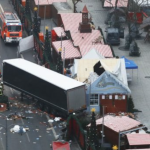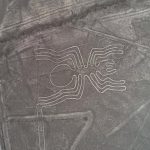It is a bronze structure 33 meters high in honor of the leader who founded the city. Prime Minister Narendra Modi’s nationalist party has been building huge (and expensive) monuments for years. The local population has shown its opposition on several occasions.
Bengaluru () – Tomorrow the Indian Prime Minister, Narendra Modi, will inaugurate a statue of Nadaprabhu Kempegowda, a leader considered the founder of Bengaluru (Karnataka). At almost 33 meters high, the “Statue of Prosperity” -as it is called by the local authorities- is “the first and tallest bronze statue dedicated to a founder of a city, according to the World Book of Records“It symbolizes the vision of a global city,” Karnataka Chief Minister Basavaraj Bommai tweeted in recent days, referring to the 108-foot-tall structure.
The government-sponsored project, which includes a theme park, cost 840 million rupees (10.3 million euros). Prior to its completion, the “holy mud” (Mruthike) was collected from hundreds of local villages by 21 special vehicles. Today this mud was mixed with the earth located at the base of one of the columns of the architectural structure.
In recent years, with the aim of reinforcing nationalist propaganda, the Bharatiya Janata Party (BJP) government has used symbols and characters related to Hinduism and the fight against foreign forces.
In September, Prime Minister Modi unveiled a statue of Subhas Chandra Bose, an Indian independence hero who opposed British colonial rule but is also controversial for his links to Nazi Germany and Japan during World War II. The BJP has praised Bose while downplaying the role played in India’s independence by Mahatma Gandhi and Prime Minister Jawaharlal Nehru, two figures whose heritage is tied to the main opposition Congress party.
The unveiling of ever-taller monuments is a particularly active practice in BJP-ruled states. In February this year, a statue of the 11th-century philosopher Rāmānuja Āchārya (Ramanajucharya) was erected in Hyderabad, reminiscent of universal harmony and brotherhood, as the intellectual fought against the social injustice of caste division. A local investigation later revealed that the valuable metal structure, which cost 1,350 million rupees (more than 16.6 million euros), was made in China.
Another example is the 182-meter-tall statue of Sardar Vallabhai Patel, erected in 2018 as a sign of “unity”. As a result of the project, more than 75,000 tribals protested against the government because they were dispossessed of their lands without due compensation. A similar episode took place in November 2020 with the construction of the “Statue of Peace” in Rajasthan: the inauguration ceremony coincided with anti-government protests over high levels of unemployment.











